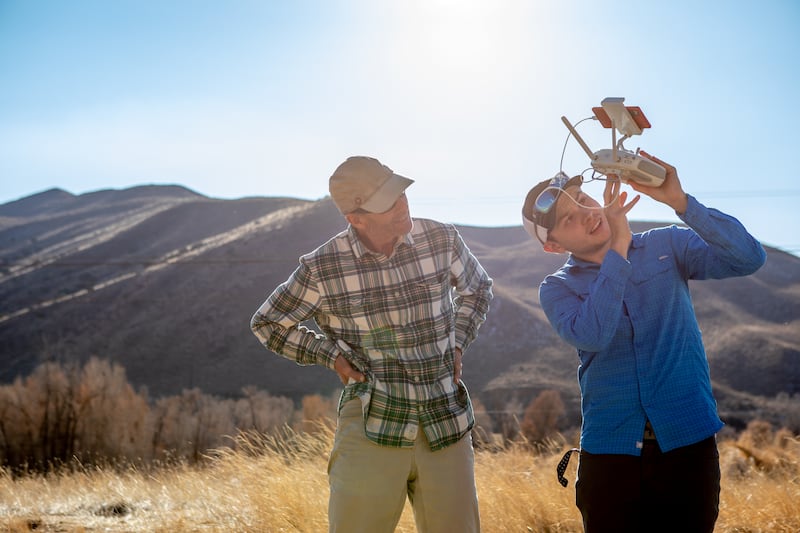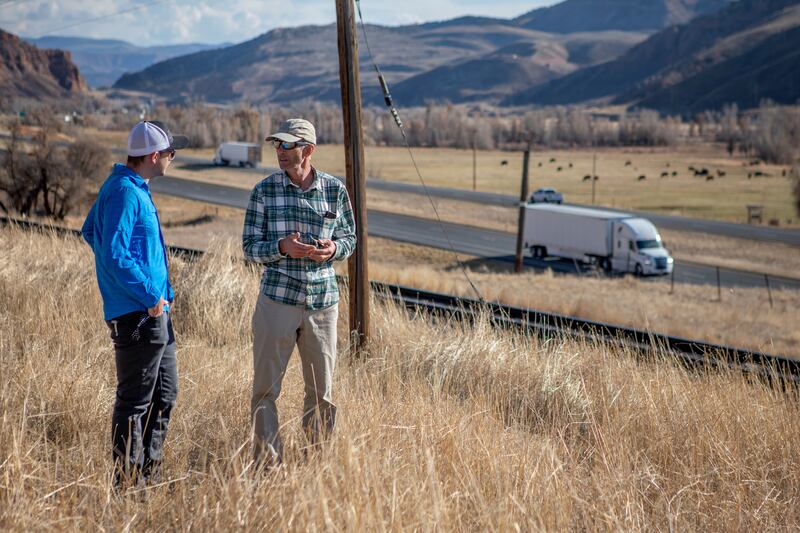OGDEN — Winding through national forest in the northern Wasatch Mountains, the stretch of Interstate 84 between Echo Reservoir and Ogden is beautiful — unless, like many travelers, your attention is instead drawn to the gruesome carcasses of roadkill that seem to litter the highway every few miles.
In a 2015 interview with the Standard-Examiner, one Utahn dubbed it “the highway paved with blood.”
“I would always look in that I-84 corridor there and just see tons of roadkill all over the place,” Timber Erickson, a senior at Weber State, told the Deseret News. “I thought, why hasn’t any thorough research been done in this area?”
So the 21-year-old geography major took it upon himself, dedicating his senior thesis to finding an ideal location along the northern Utah highway to install a wildlife crossing, similar to the overpass built in Parleys Canyon over I-80 in 2018. The $5 million project has been heralded as a success by the Utah Division of Wildlife Resources.
“If they did it in Parleys, they ought to do it here as well,” Erickson said.
Erickson used roadkill data from the DWR to identify areas along I-84 where animals frequently crossed over the highway, overlaying it with habitat data for large migratory mammals, like deer, elk and moose — the worst animals to hit.
“I was able to dial in all their data to show where accidents were happening the most near crucial habitat areas that were possibly fragmented by the highway system,” he said.

Erickson was able to narrow his search down to three potential locations: one outside the town of Morgan, a second near the interchange of I-84 and I-80 by Echo Canyon, and a third 2 miles southeast of Henefer.
“Henefer, near Leonards Canyon, had the most accidents in the area that were within a 3-kilometer distance of crucial habitat zones for deer, elk and moose,” he said.
Erickson’s project could be literally lifesaving, as animals on the highway are sometimes deadly. Between 1992 and 2005, there were 30,500 wildlife-vehicle collisions in Utah, 2,030 injuries and 18 human deaths, according to the Wildlands Network.
“If you are barreling down I-80 and an elk walks out in front of you, you’ve lost that fight,” Gabby Saunders, campaign communication specialist with Wildlands Network, told the Deseret News in March.
Not to mention the thousands of deer and moose killed by collisions, animals with populations already in decline, according to DWR reports.
Hitting an animal with your car is expensive, too. Reports from State Farm put the average claim for an “animal strike” at $4,341. Near the Henefer location, Erickson estimated there were 353 car collisions with deer, elk and moose over a three year period. That’s over $1.5 million in insurance claims in that one small section of highway alone.
Erickson is looking to have his paper published in a peer reviewed journal, an impressive goal for an undergraduate student. Even more ambitious, however, are his hopes to one day see his wildlife overpass become a reality.
“That’s kind of the toughest question out of all this research,” he said. “It’s going to take several million dollars of either publicly funded money, or it’s going to take private funding as well.”
On top of that, Erickson’s project would need to through what he calls “the slow gears of government,” navigating a number of bureaucracies including the Federal Highway Administration, the Federal Railroad Administration, and Summit County, who owns the land in question.
That doesn’t mean he isn’t determined, saying “I will keep with this as long as I need to.”
“Even if this type of infrastructure didn’t get implemented, at least it could be used as a resource for the state in future research and issues regarding wildlife migration.”



